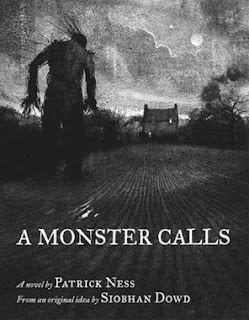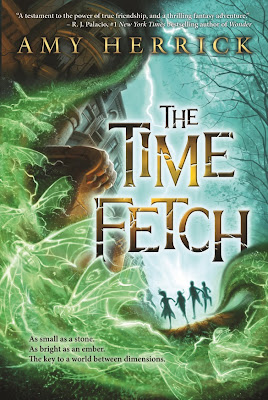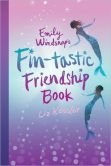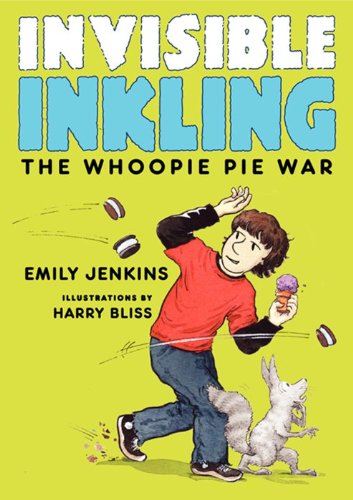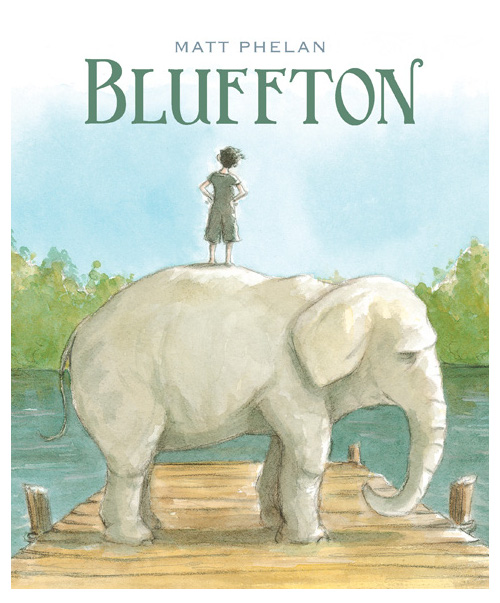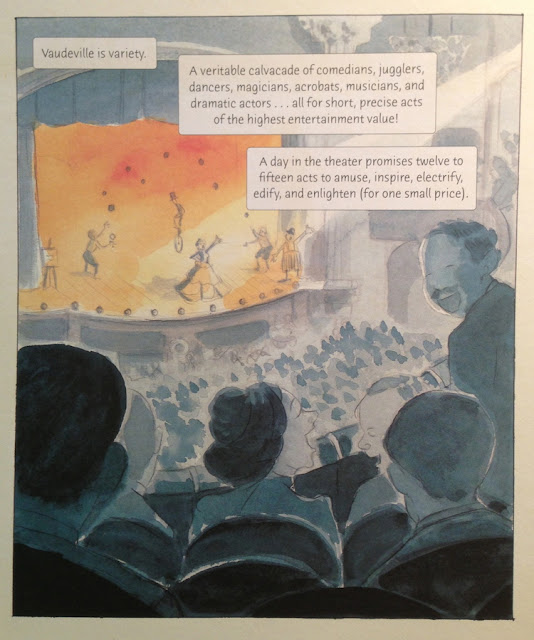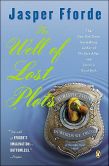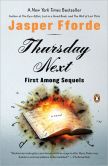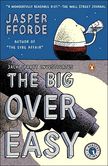Wild Boy : The Real Life of the Savage of Aveyron, written by Mary Losure and illustrated by Timothy Basil Ering can be described as narrative non-fiction because it reads like a novel. Losure, who has worked as a longtime staff reporter for Minnesota Public Radio and a contributor to National Public Radio is also the author of another work of narrative non-fiction for young readers. The Fairy Ring: Or Elsie and Frances Fool the World, which was published in 2012, is the story of fifteen-year-old Frances and her nine-year-old cousin, Elsie. In 1917, the two girls take paintings of fairies that Frances has done out into the wilderness and photograph them in such a way that makes them look real. When their photos are randomly discovered by a popular group that believes in spiritualism, they are validated as "real" by photo experts and enthusiastically embraced by Sir Arthur Conan Doyle himself. Believers find it impossible to think that two working class girls could be responsible for a hoax of this nature, their classism further fueling the growing hysteria. I remember first learning of this when the movie Fairy Tale: A True Story came out in 1997. I had no idea that there had been a book written about this incident, especially a children's book. I can't wait to get my hands on The Fairy Ring: Or Elsie and Frances Fool the World, especially after reading the haunting Wild Boy : The Real Life of the Savage of Aveyron.
 A child reading Wild Boy : The Real Life of the Savage of Aveyron probably will not notice aspects of this biography, which contains copious source notes as well as an index, that an adult might, and that's fine. Losure, in a bid to stay true to the facts, is speculative at times in her writing, using words like "maybe," and "might have" to describe undocumented feelings and actions. While this might stand out to adult readers, I think that it will serve to draw in younger readers to this already compelling story. The other aspect of this story that might strike adult readers is the minimum of facts and documentation about the Wild Boy, his story beginning around 1800 (or, given the time and circumstances, this could be seen as a veritable wealth of information). However, I have no doubt that, between the information that Losure does draw out, the moments when she imagines what the Wild Boy might have been thinking and feeling and the moving illustrations by Ering, certain readers will be completely engrossed by this book and the story of the Wild Boy from Aveyron. Losure begins her book in 1797 in the mountains of southern of France where the Wild Boy, thought to be about nine years old, was first spotted by hunters. Wild Boy : The Real Life of the Savage of Aveyron follows him through his many captures and escapes until he comes to the attention of a town official with a scientific interest who observes the boy and takes notes on his behavior while attempting to socialize him, eventually sending on his findings to government officials in Paris. The boy is moved again and again until he finally ends up in Paris at the Institute for Deaf-Mutes where it is hoped that the Abbé Sicard, who was thought to have been able to teach deaf-mute children to speak, would work a miracle with the Wild Boy, despite the fact that he is not deaf.
A child reading Wild Boy : The Real Life of the Savage of Aveyron probably will not notice aspects of this biography, which contains copious source notes as well as an index, that an adult might, and that's fine. Losure, in a bid to stay true to the facts, is speculative at times in her writing, using words like "maybe," and "might have" to describe undocumented feelings and actions. While this might stand out to adult readers, I think that it will serve to draw in younger readers to this already compelling story. The other aspect of this story that might strike adult readers is the minimum of facts and documentation about the Wild Boy, his story beginning around 1800 (or, given the time and circumstances, this could be seen as a veritable wealth of information). However, I have no doubt that, between the information that Losure does draw out, the moments when she imagines what the Wild Boy might have been thinking and feeling and the moving illustrations by Ering, certain readers will be completely engrossed by this book and the story of the Wild Boy from Aveyron. Losure begins her book in 1797 in the mountains of southern of France where the Wild Boy, thought to be about nine years old, was first spotted by hunters. Wild Boy : The Real Life of the Savage of Aveyron follows him through his many captures and escapes until he comes to the attention of a town official with a scientific interest who observes the boy and takes notes on his behavior while attempting to socialize him, eventually sending on his findings to government officials in Paris. The boy is moved again and again until he finally ends up in Paris at the Institute for Deaf-Mutes where it is hoped that the Abbé Sicard, who was thought to have been able to teach deaf-mute children to speak, would work a miracle with the Wild Boy, despite the fact that he is not deaf.
 What Sicard was skilled at was teaching his deaf-mute pupils to communicate through reading and writing. However, he seemed to have no interest in working with the Wild Boy and soon turned him over to Dr. Itard, who, while not the first person to show kindness to the boy, ensured that he was protected and nurtured, as much as the social norms of the time allowed. Itard's attempts to teach the Wild Boy, to whom he gives the name Victor, are both heartbreaking and exhilarating. What was especially fascinating to me was reading the author's note where I learned of the impact that Dr. Itard's teaching methods and had on how children, especially those with what we now refer to as special needs, were taught. Children once "dismissed as 'imbeciles' or 'idiots'" were now educated using Itard's methods. The WIld Boy and Itard's time together gave meaning and purpose and a productive life to many children who would have otherwise languished in a institution or similar prison of the time. Later still, Itard's works helped Maria Montessori develop new teaching methods that went on to influence educators all over the world. This makes perfect sense as there were moments in the book where Losure was describing Itard's lessons with Victor when I was deeply impressed by his ideas and attempts. Wild Boy : The Real Life of the Savage of Aveyron was a very moving book for me to read. As an adult, the idea of a child growing up alone in the woods then being forced to socialize is compelling. I know that these same aspects, but possibly for different reasons, will appeal to young readers and hopefully send them off on journey that will lead them to read more non-fiction stories as well written as Losure's.
What Sicard was skilled at was teaching his deaf-mute pupils to communicate through reading and writing. However, he seemed to have no interest in working with the Wild Boy and soon turned him over to Dr. Itard, who, while not the first person to show kindness to the boy, ensured that he was protected and nurtured, as much as the social norms of the time allowed. Itard's attempts to teach the Wild Boy, to whom he gives the name Victor, are both heartbreaking and exhilarating. What was especially fascinating to me was reading the author's note where I learned of the impact that Dr. Itard's teaching methods and had on how children, especially those with what we now refer to as special needs, were taught. Children once "dismissed as 'imbeciles' or 'idiots'" were now educated using Itard's methods. The WIld Boy and Itard's time together gave meaning and purpose and a productive life to many children who would have otherwise languished in a institution or similar prison of the time. Later still, Itard's works helped Maria Montessori develop new teaching methods that went on to influence educators all over the world. This makes perfect sense as there were moments in the book where Losure was describing Itard's lessons with Victor when I was deeply impressed by his ideas and attempts. Wild Boy : The Real Life of the Savage of Aveyron was a very moving book for me to read. As an adult, the idea of a child growing up alone in the woods then being forced to socialize is compelling. I know that these same aspects, but possibly for different reasons, will appeal to young readers and hopefully send them off on journey that will lead them to read more non-fiction stories as well written as Losure's.
Source: Review Copy

